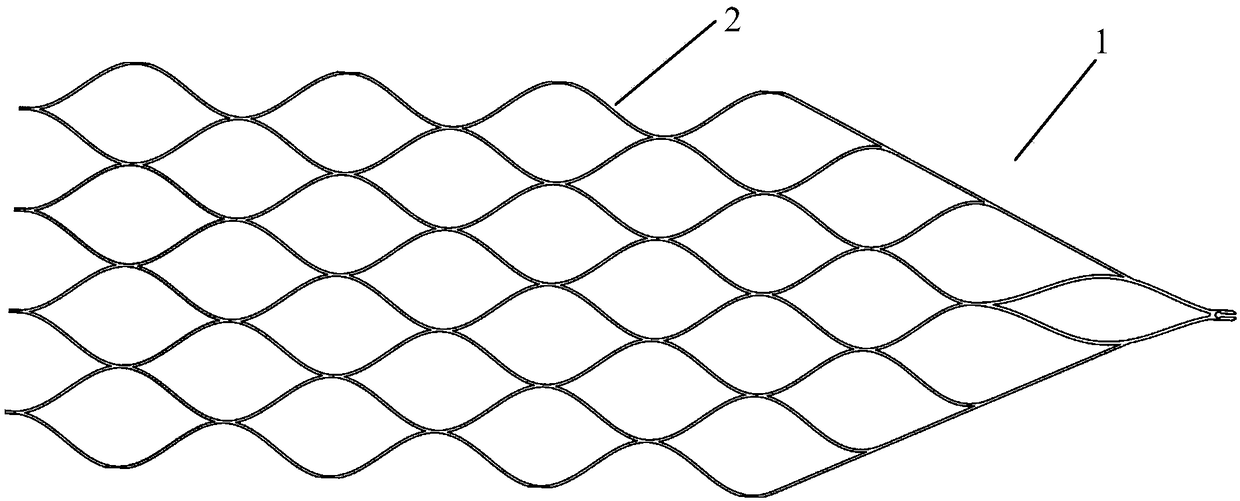Thrombus extraction scaffold
A technology of metal ribs and push rods, applied in the field of medical devices, can solve the problems of difficult operation, large damage to blood vessel walls, and easy to cause various concurrent inflammations, etc.
- Summary
- Abstract
- Description
- Claims
- Application Information
AI Technical Summary
Problems solved by technology
Method used
Image
Examples
Embodiment 1
[0165] The thrombectomy bracket of this embodiment is as Image 6 As shown, it includes stent 1 and push rod 3, which are mainly used to remove intracranial thrombus.
[0166] The stent 1 is cut from a metal tube, and the cut metal tube is in the shape of a plurality of metal ribs 2 helically intersecting. The metal ribs 2 gather at the far end of the stent 1 to the first gathering point (gathered and melted Polymer material film wrapping). The distal end of the stent 1 is folded into a closed shape, so that the ability of the stent to capture thrombus is stronger, and a polymer tube (material can be but not limited to pebax, nylon, TPU) is used to integrate the heat-shrinkable part of the folded head into one. The proximal end of the stent 1 is obliquely cut, and the metal ribs 2 converge at the proximal end of the stent 1 to form a second gathering point. The distal opening of such a stent 1 is a small opening, and the shrunk stent 1 is small in size, and is easier to ente...
Embodiment 2
[0176] The thrombectomy bracket of this embodiment is the same as that of Example 1, the difference is that the number of developing wires of the thrombectomy bracket of this embodiment is the same as the number of strands of the ribs at the distal end of the bracket, both of which are 8. A developing wire is independently attached to a strand of metal ribs, and one end of the developing wire is positioned and connected to the far end of the stent, and the other end of the developing wire is positioned and connected to the proximal end of the stent, and the developing wire can also develop the shape of the entire stent .
Embodiment 3
[0178] The thrombectomy bracket of this embodiment is the same as that of Example 1, and the difference is that the number of developing wires in the thrombectomy bracket of this embodiment is 4, and the number of strands of the ribs at the far end of the bracket is 8 strands, that is, one developing wire Attached to two strands of metal ribs, this reduces the number of developing wires. The winding method is as follows: a developing wire is wound from the far end of the stent to the proximal end of the stent along the metal rib, and returns to the far end of the stent through the notch.
PUM
| Property | Measurement | Unit |
|---|---|---|
| Outer diameter | aaaaa | aaaaa |
| Length | aaaaa | aaaaa |
Abstract
Description
Claims
Application Information
 Login to View More
Login to View More - R&D
- Intellectual Property
- Life Sciences
- Materials
- Tech Scout
- Unparalleled Data Quality
- Higher Quality Content
- 60% Fewer Hallucinations
Browse by: Latest US Patents, China's latest patents, Technical Efficacy Thesaurus, Application Domain, Technology Topic, Popular Technical Reports.
© 2025 PatSnap. All rights reserved.Legal|Privacy policy|Modern Slavery Act Transparency Statement|Sitemap|About US| Contact US: help@patsnap.com



